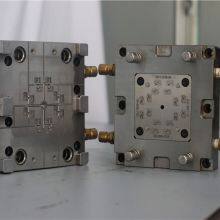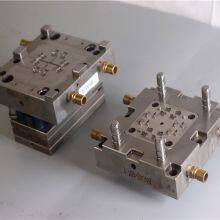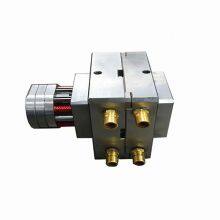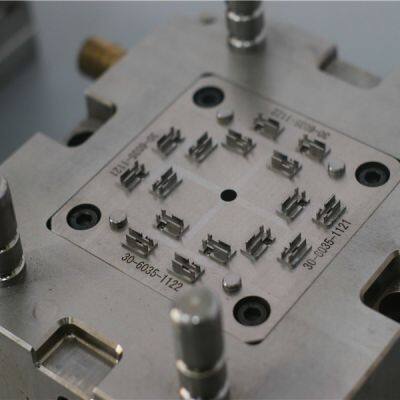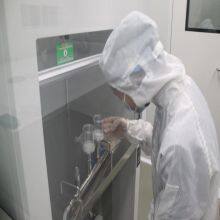China Plastic Injection Mould Factory for Europe Export Usage
Precision injection molding is the cornerstone of manufacturing high-tolerance, biocompatible components for medical devices—from surgical instrument housings to microfluidic chips. The unique demands of medical applications necessitate rigorous mold design and process control. Below are essential technical and operational factors for ensuring quality, compliance, and reliability.
1. Design & Engineering Fundamentals
Micro-Feature Accuracy
Medical parts often require micron-level tolerances (e.g., ±0.01 mm for fluidic channels). Molds must incorporate hardened steel inserts polished to Ra ≤ 0.05 μm to prevent sticking and ensure demolding integrity.Gating & Venting Strategy
Sub-gates or pinpoint gates minimize cosmetic defects in visible components (e.g., endoscope housings). Vacuum venting (<0.01 mm depth) eliminates gas traps that cause burns or voids in thin-walled parts.Conformal Cooling
3D-printed cooling channels following cavity contours reduce cycle times by 30–40% while preventing warpage in polymers like PEEK and PC.
2. Material Science Integration
Metal Selection & Treatment
Corrosion Resistance: Stainless steel (e.g., SS420) or nickel alloys resist EtO sterilization and acidic cleaning.
Surface Enhancement: TiN or DLC coatings extend mold life >1 million cycles by reducing wear against glass-filled polymers.
Polymer-Mold Interaction
High-flow materials (e.g., LSR) demand hardened tool steel to withstand abrasion; semi-crystalline resins (e.g., POM) require precise mold temps to control shrinkage.
3. Process Validation & Control
Scientific Molding Principles
Phase-Based Parameter Control: Separate filling, packing, and cooling phases with real-time pressure/temperature sensors to ensure consistency.
DOE Optimization: Use design of experiments to define process windows (e.g., melt temp ±3°C, hold pressure ±5%).
In-Line Metrology
Integrated vision systems or laser micrometers detect defects (sink marks, flash) with ≤10 μm resolution, enabling 100% inspection for critical dimensions.
4. Cleanroom & Contamination Control
ISO Class 7/8 Environment
Molds must be assembled and maintained in controlled environments to prevent particulate contamination affecting biocompatibility.Anti-Contamination Protocols
Dry-cycle molds before production to remove lubricants.
Use FDA-approved mold releases sparingly to avoid residue transfer.
5. Regulatory & Quality Compliance
Traceability Systems
Embed RFID tags in molds to log maintenance history, cycle counts, and process data for FDA 21 CFR Part 820 compliance.Documentation Rigor
IQ/OQ/PQ reports validating mold performance.
FMEA for failure modes (e.g., core misalignment, vent blockage).
6. Lifecycle Management
Preventive Maintenance
Schedule ultrasonic cleaning and surface recoating every 50,000 cycles to maintain tolerances.Rapid Changeover Design
Modular components (e.g., interchangeable cores) reduce downtime during product family transitions.
Case Study: Trocar Valve Mold Optimization
A tier-1 supplier redesigned a 64-cavity mold for PEEK trocar seals:
Challenge: Warpage from uneven cooling caused seal leakage.
Solution:
Conformal cooling channels reduced temp variation to <2°C.
Vacuum venting eliminated gas burns.
Result: Reject rates dropped from 8% to 0.2%, saving $500k/year.
Emerging Technologies
AI-Driven Predictive Maintenance
Sensors detect abnormal vibration or temp spikes, forecasting failures before they occur.Hybrid Molds
Metal 3D-printed inserts with conformal cooling + CNC-machined bases optimize cost and performance.
Conclusion
Precision molds for medical components must harmonize cutting-edge engineering, stringent process control, and uncompromising regulatory adherence. Success hinges on:
Design Excellence (micron accuracy, material-aware tooling);
Process Mastery (scientific molding, real-time monitoring);
Ecosystem Control (cleanroom protocols, traceability).

Send Inquiry to This Supplier
You May Also Like
-
New Structure of Sealing About Laparoscopy Disposable Trocars From China FactoryUS$ 4MOQ: 50000 Pieces
-
Disposable Suction and Irrigation Device China OEM ODM FactoryUS$ 6MOQ: 50000 Pieces
-
ODM OEM Disposable Ligating Clips by China Jiangsu Factory for Laparoscpy SurgeryUS$ 0.1MOQ: 1000000 Pieces
-
Surgery Irrigation Tube for Laparoscopic OEM by China FactoryUS$ 6MOQ: 50000 Pieces
-
Surgery Disposable Tissue Clamps OEM Factory by China ManufacturersUS$ 0.1MOQ: 1000000 Pieces
-
Laparoscopy Instruments OEM for Irrigation Tube and Scution TubeUS$ 6MOQ: 50000 Pieces
-
Disposable Hem o Lock Stytle Nonabsorbable Ligating Clips for Laparoscopy OEM ServiceUS$ 0.1MOQ: 1000000 Pieces
-
PEEK 450G TYPE UNFILLED NATURAL PELLETS for Plastic Injection Molding and Mold Maker ManufacturingUS$ 99 - 110MOQ: 25 Kilograms
-
Inflatable Core Molds Rubber Culvert Balloon Concrete Precast Makers Inflated Rubber Airbag for Pipe Plu Culvert BalloonsUS$ 29 - 30MOQ: 10 Meters
-
Electric Commercial Cone Making Wafer Biscuit Baker Maker Machine Cup Mold Ice Cream Cone MachineNegotiableMOQ: 1 Set



